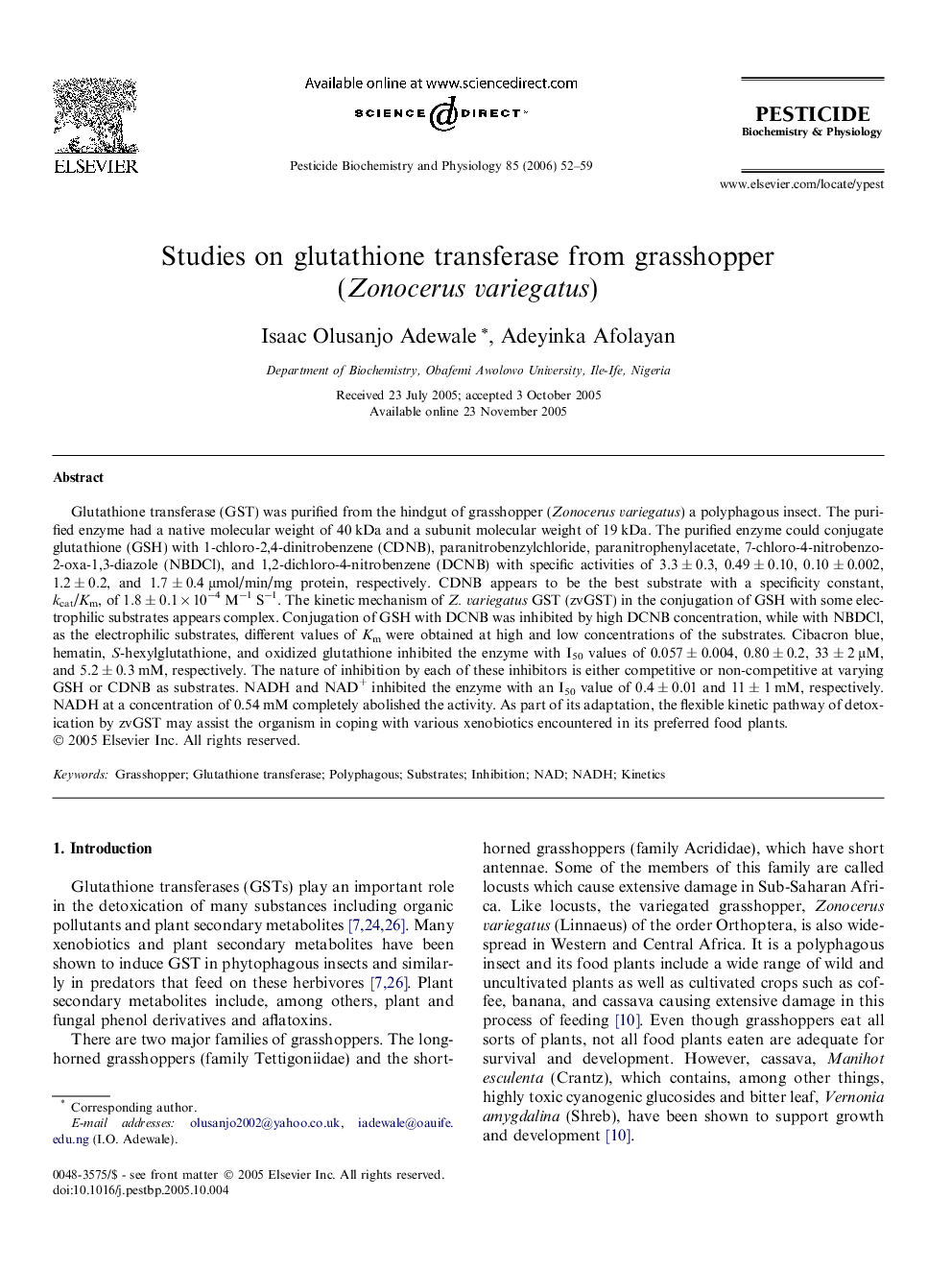| کد مقاله | کد نشریه | سال انتشار | مقاله انگلیسی | نسخه تمام متن |
|---|---|---|---|---|
| 2010229 | 1066725 | 2006 | 8 صفحه PDF | دانلود رایگان |
عنوان انگلیسی مقاله ISI
Studies on glutathione transferase from grasshopper (Zonocerus variegatus)
دانلود مقاله + سفارش ترجمه
دانلود مقاله ISI انگلیسی
رایگان برای ایرانیان
کلمات کلیدی
موضوعات مرتبط
علوم زیستی و بیوفناوری
علوم کشاورزی و بیولوژیک
علوم زراعت و اصلاح نباتات
پیش نمایش صفحه اول مقاله

چکیده انگلیسی
Glutathione transferase (GST) was purified from the hindgut of grasshopper (Zonocerus variegatus) a polyphagous insect. The purified enzyme had a native molecular weight of 40 kDa and a subunit molecular weight of 19 kDa. The purified enzyme could conjugate glutathione (GSH) with 1-chloro-2,4-dinitrobenzene (CDNB), paranitrobenzylchloride, paranitrophenylacetate, 7-chloro-4-nitrobenzo-2-oxa-1,3-diazole (NBDCl), and 1,2-dichloro-4-nitrobenzene (DCNB) with specific activities of 3.3 ± 0.3, 0.49 ± 0.10, 0.10 ± 0.002, 1.2 ± 0.2, and 1.7 ± 0.4 μmol/min/mg protein, respectively. CDNB appears to be the best substrate with a specificity constant, kcat/Km, of 1.8 ± 0.1 Ã 10â4 Mâ1 Sâ1. The kinetic mechanism of Z. variegatus GST (zvGST) in the conjugation of GSH with some electrophilic substrates appears complex. Conjugation of GSH with DCNB was inhibited by high DCNB concentration, while with NBDCl, as the electrophilic substrates, different values of Km were obtained at high and low concentrations of the substrates. Cibacron blue, hematin, S-hexylglutathione, and oxidized glutathione inhibited the enzyme with I50 values of 0.057 ± 0.004, 0.80 ± 0.2, 33 ± 2 μM, and 5.2 ± 0.3 mM, respectively. The nature of inhibition by each of these inhibitors is either competitive or non-competitive at varying GSH or CDNB as substrates. NADH and NAD+ inhibited the enzyme with an I50 value of 0.4 ± 0.01 and 11 ± 1 mM, respectively. NADH at a concentration of 0.54 mM completely abolished the activity. As part of its adaptation, the flexible kinetic pathway of detoxication by zvGST may assist the organism in coping with various xenobiotics encountered in its preferred food plants.
ناشر
Database: Elsevier - ScienceDirect (ساینس دایرکت)
Journal: Pesticide Biochemistry and Physiology - Volume 85, Issue 1, May 2006, Pages 52-59
Journal: Pesticide Biochemistry and Physiology - Volume 85, Issue 1, May 2006, Pages 52-59
نویسندگان
Isaac Olusanjo Adewale, Adeyinka Afolayan,